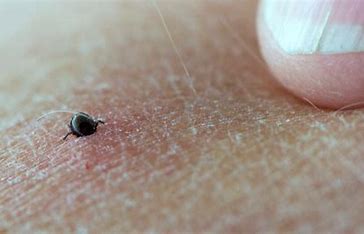Introduction
Lyme disease is a tick-borne illness caused by the bacterium Borrelia burgdorferi. It is primarily transmitted to humans through the bite of infected black-legged ticks, commonly known as deer ticks. This article provides an overview of Lyme disease, including its causes, symptoms, diagnosis, and available treatment options.
Causes and Transmission
a. Tick-Borne Infection: Lyme disease is caused by the bacteria Borrelia burgdorferi, which is transmitted to humans through the bite of infected ticks. The primary carrier of the bacterium is the black-legged tick, commonly found in wooded and grassy areas.
b. Life Cycle of Ticks: Ticks go through different life stages, including larvae, nymphs, and adults. Each stage requires a blood meal, and if a tick feeds on an infected animal during any of these stages, it can acquire and transmit the bacteria to humans during subsequent bites.
Symptoms and Clinical Manifestations
a. Early Stage: The early stage of Lyme disease is characterized by a distinct skin rash called erythema migrans, which usually appears within 3 to 30 days after a tick bite. The rash may expand gradually and develop a “bull’s-eye” appearance. Other early symptoms may include flu-like symptoms, such as fatigue, fever, headache, muscle and joint aches, and swollen lymph nodes.
b. Disseminated Stage: If left untreated, Lyme disease can progress to the disseminated stage, affecting multiple body systems. Symptoms may include severe headaches, facial palsy (loss of muscle tone or drooping on one or both sides of the face), heart palpitations, joint pain, and swelling. Nervous system involvement may lead to memory problems, difficulty concentrating, and nerve pain.
c. Late-Stage Lyme Disease: In some cases, if the infection remains untreated for an extended period, it can lead to chronic symptoms such as arthritis, cognitive impairments, and fatigue. These persistent symptoms can significantly impact a person’s quality of life.
Diagnosis and Laboratory Testing
a. Clinical Assessment: Diagnosis of Lyme disease is primarily based on clinical assessment, considering symptoms, exposure to tick-infested areas, and the presence of a rash. A thorough medical history and physical examination are crucial in evaluating potential cases.
b. Laboratory Testing: Laboratory tests, such as enzyme immunoassay (EIA) and Western blot, can be performed to confirm the presence of antibodies against Borrelia burgdorferi. However, these tests may not show accurate results during the early stages of the infection.
Treatment and Management
a. Antibiotic Therapy: The primary treatment for Lyme disease is a course of antibiotics, typically doxycycline, amoxicillin, or cefuroxime axetil, depending on the age of the patient and the stage of the disease. Early treatment is crucial in preventing the progression of the infection and reducing complications.
b. Follow-Up and Monitoring: Patients undergoing treatment should be closely monitored for symptom improvement and potential complications. In some cases, individuals with persistent symptoms may require additional or prolonged antibiotic therapy.
c. Prevention Strategies: Preventive measures are essential to reduce the risk of Lyme disease. These include avoiding tick-infested areas, wearing protective clothing (long sleeves, pants, and tick repellents), conducting thorough tick checks after outdoor activities, and promptly removing attached ticks.
Conclusion
Lyme disease is a significant health concern, particularly in areas with high tick populations. Early recognition, diagnosis, and treatment are crucial in managing the infection and preventing complications. Public awareness, education on preventive measures, and ongoing research are necessary to combat Lyme disease effectively and minimize its impact on affected individuals. By adopting proactive measures, we can reduce the incidence of Lyme disease and promote overall well-being in our communities.

